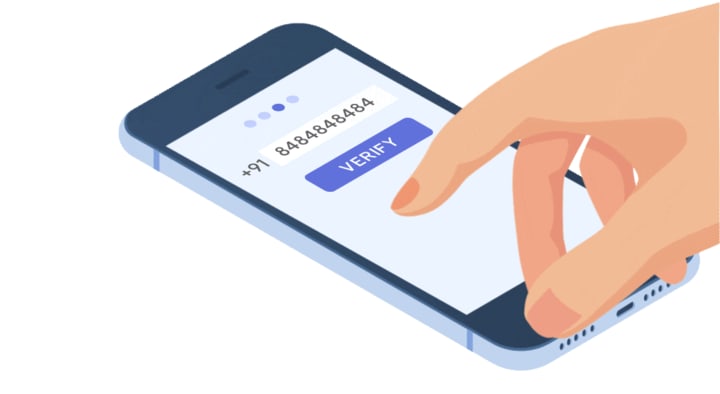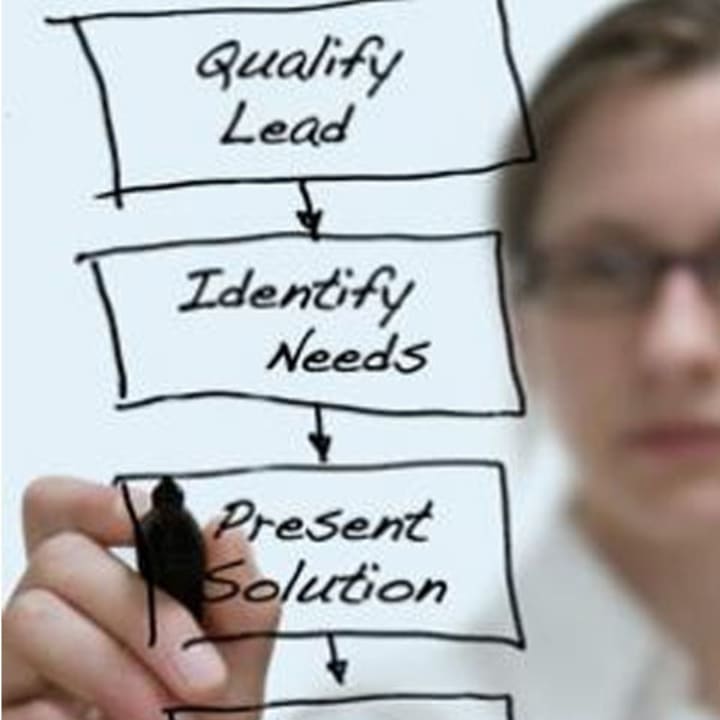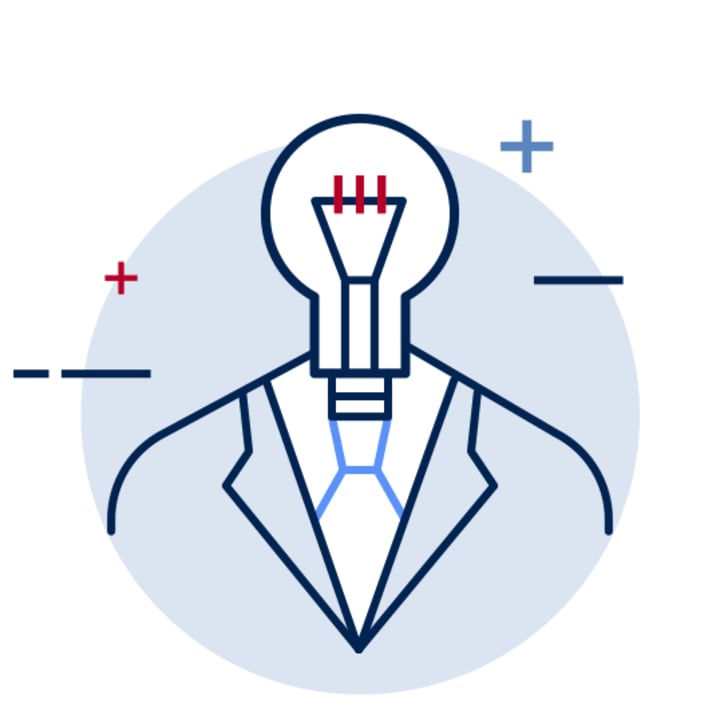9 Sales Process That You Seriously Need
Let's Dive into this 9 Sales Process

Sales are the foundation of any organization. Without it, the entire structure will fall down. But sales, in general, is quite challenging. Even the top salespeople feed that sales can be difficult when it comes to pushing the potential leads into closed sales.
Be it any industry, you will need skills and expertise to prove to your customers that the solution you are providing is the best medicine for their wound.
Easier said than done, right?
Well, not this time. Though the sales process is a difficult and time taking process, it can be made simple and repetitive if you follow the proper guidelines.
In this article, we will talk about 7 important sales processes that can be a game-changer for you. Upon implementing these processes, you can definitely keep your sales on autopilot and manage the sales cycle easily.
1) Call Management

The early discussions and conversations that happen between the buyer and the sales reps start with the planning stage. Here the sales reps ask open-ended questions to the buyer in order to understand their objective and intention.
This is then followed by the execution stage where the sales reps rely on their research and preparation so that they can guide the customer.
If things go as planned, the debrief will mostly bring a senior team member into the game where they will share the feedback and check how things went by.
If there are any questions and room for improvement, a senior team member can jump in and make things clear before the process moves down.
2) Qualification Process

Every sales team should have a proper approach to the qualification process. Because this is the stage where you have to confirm if the customer is the right fit for you or not. If the customer surpasses this step, the further process becomes easy.
So how do you qualify the customer?

Well, there should be a complete checklist of pointers that the sales reps should keep in mind before the move ahead. Sales reps can ask questions that make it clear if the person is the right fit for your product or not.
Check out the below questions that sales reps can ask to qualify the customer.
How did you hear about us?
What Problem Are You Trying to Solve
Why Are You Solving This Problem Now?
What Have You Tried in the Past?
Did X strategy work for you?
What Made You Interested in Us/Our Brand?
What Are Your Top Priorities in a Solution?
Once you start the initial conversations with the prospects, they will feel more confident and will open up about their problems which will help you qualify the leads.
3) Preparation

The technique is important to selling, and a big part of this phase is about marketing and everything that should be done before you even consider getting in front of a customer.
Now after the lead is qualified, you have a lot of answers to the questions that you asked in the earlier sales process. This will help you get to know the customer better and you can prepare to present your product.
Records of the previous sales calls and recordings can be used here to train your
sales squad and expose the entire sales team to the finest strategies that the top performers are using to leverage the sales coaching platform
4) Approach

In this phase, you demonstrate how your solutions solve the needs of your potential customer. Once you have researched and prepared, its time to face the prospect. It can either be a face-to-face meeting or over the phone. Be it any way, there are three important approaches that you can use.
Premium approach: Presenting your potential client with a gift at the beginning of your interaction
Question approach: Asking a question to get the prospect interested
The product approach: Giving the prospect a sample or a free trial to review and evaluate your service
Keep the conversation open-ended and his details will give you more understanding about them.
5) Presentation

If you have followed the above stage correctly and your conversation with the customer was engaging, you may be fortunate enough to book a meeting. The stage will be determined by how well you have nailed down the above steps and how well you perform your demo.
Your sales pitch will do the magic here so make sure it is personalized. Once you keep beginning your presentation check if the prospect looks interested and convinced. If not, take a pause and ask questions.
One of the best ways to involve the customers in your presentation is to give real-time examples and engage with the customers. You can use the 60 seconds rule where you talk for 60 seconds and then ask questions.
6) Handling Objections

It is natural for the customers to have questions once you finish the sales presentation.
This is one of the most underrated stages that good salespeople may skip, but the best ones will make use of it.
You can be prepared and use some of the following ideas:
Understand the customer’s comments by acknowledging their views and then responding with solutions.
Check their views to find ways to address them.
Restate the customer’s objection. By saying it aloud, you can reduce its impact.
Ideally, you will be prepared for what customers will say, and be ready to respond.
For example:
Objection: ‘Sorry, I don’t have the time today.’
Response: ‘No problem. I’m more than happy to book you a ten-minute meeting later in the week.’
7) Closing

This is one of the most important and challenging parts of sales. This is the decision making stage where you actually have to ask if the potential customer is willing to make the purchase.
If you played your game well in the previous stages the customer will be convinced that your solution will meet their needs and you can close the sale by agreeing on the terms of the sale and finishing up the transaction.
Ask for the below questions to complete the closing of the sale.
Will you pay the whole fee upfront or in installments?
Would you like me to wrap that for you?’
Offer something extra to get the prospect to close, such as a free month of service or a discount. Create urgency by expressing time is of the essence. For example, ‘The price will be going up after this month’ or ‘We only have six spots left’.
8) Follow up

Here is your chance to up-sell or sell more. Besides additional sales, a good relationship, and trust gained from follow-up calls you made will encourage consumers to purchase from you again.
And if you’ve done a really good job with follow-up calls—they may just refer some new business your way. Once you have closed the sale, your job is not done. The follow-up stage keeps you in contact with customers you have closed, not only for potential repeat business but for referrals as well.
And since retaining current customers is six to seven times less costly than acquiring new ones, maintaining relationships is key.
9) References

References are the low hanging fruits that people do not touch. Why? Because it is awkward and looks desperate. Well, if you are into sales, these words are not in the dictionary.
If you have played well, with the entire sales process, there are high chances that your customer will refer you to their connections. These references are highly qualified leads that have a high conversion ratio.
Talk to your customers, ask them if they have someone from their connection and they will be happy to share details.
As said by Dale Carnegie, the famous author, 91% of customers say they are happy to share referrals, but only 11% of salespeople ask for one. You can send personalized referral emails to your customer to increase your sale.
Conclusion
It is important to understand that you should never look upon a sales process as set in stone and only updated infrequently. On the other side, the sales process should be customer driven and influence their buying process and habits.
Such customer-alignment will pay huge revenue over time and keep you ahead of many of your competitors.
Since these are evolving and changing with greater frequency than ever, you should be constantly validating your sales process and tweaking as necessary.





Comments
There are no comments for this story
Be the first to respond and start the conversation.